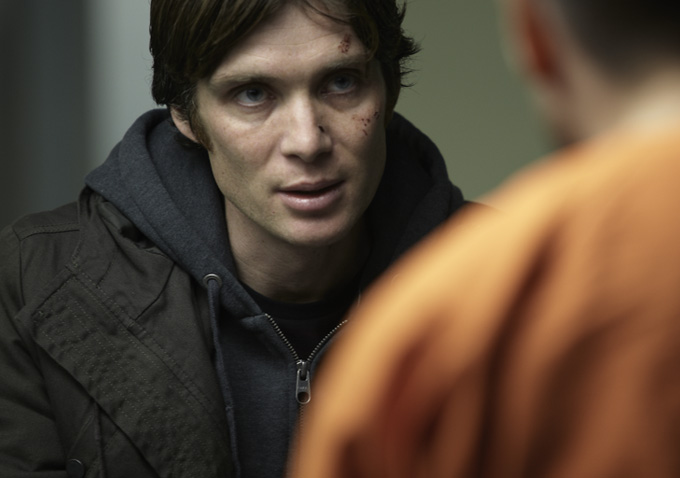 What you see, you can’t believe. What you can’t understand, though, can ultimately be explained. This is the modus operandi for Margaret Matheson (Sigourney Weaver) and assistant Tom Buckley (Cillian Murphy), parapsychologists primarily interested in debunking supernatural phenomena. “When I see hoof prints,” she says, “I think of horses, not unicorns.” They work out of the Scientific Paranormal Research Center, a budget-strained department of an anonymous university, luring in curious students like Sally (Elizabeth Olsen) and Ben (Craig Roberts) while butting heads with the well-supported likes of Dr. Paul Shackleton (Toby Jones).
What you see, you can’t believe. What you can’t understand, though, can ultimately be explained. This is the modus operandi for Margaret Matheson (Sigourney Weaver) and assistant Tom Buckley (Cillian Murphy), parapsychologists primarily interested in debunking supernatural phenomena. “When I see hoof prints,” she says, “I think of horses, not unicorns.” They work out of the Scientific Paranormal Research Center, a budget-strained department of an anonymous university, luring in curious students like Sally (Elizabeth Olsen) and Ben (Craig Roberts) while butting heads with the well-supported likes of Dr. Paul Shackleton (Toby Jones).

These investigators have never met a case they could not crack with rational thought processes, but when publicly adored spoon-bender/mind-blower Simon Silver (Robert De Niro) comes out of retirement after thirty years, Matheson doesn’t want to challenge him, much to Buckley’s frustration. This could upend their reputations as skeptical hooligans. This could get them all the funding they need. It’s enough to cause him to defy her and bring a whole lot of trouble down on those he cares about.
Rodrigo Cortés’ follow-up to the perfectly claustrophobic "Buried," "Red Lights" is shot and scored like a brooding supernatural thriller, and it will likely be sold as one on its release. The truth is, while "Red Lights" isn’t terrifically scary, it is thrilling in other ways, constantly playful and often tongue-in-cheek as it works through the hokey conventions of the genre. It’s the rare kind of swing-for-the-fences effort that confirms talent, and it has precisely the kind of ending that will divide audiences (as it already has here).

There are echoes of "Scanners," "Unbreakable" and "The Prestige" as Margaret and Tom go about disproving phenomenon after phenomenon, from supposedly haunted houses to elaborate stage performances akin to those for which Simon was once renowned. Cortés critically establishes the three leads’ motives for digging deeper into one another’s lives and into trickery foisted upon the innocent masses. The faith vs. science conundrum is by no means a new one, but it guides the relationship dynamics here in generally compelling directions and helps to lend a sense of honest emotional investment on part of the characters, if not the viewer, to an otherwise fundamentally silly premise.
Weaver operates with a sense of unflappable certainty whenever she’s courted by a client, questioned by a pupil or challenged by Dr. Shackleton, and as her surrogate son – she has already lost her own to a coma – Murphy is alternately admirable and impetuous. For reasons to be revealed, Margaret is wary only of the blind-but-powerful Simon, and yet Tom can’t resist digging into what those reasons were, why Silver left the spotlight and why he’s back now, three decades after his harshest critic died under mysterious circumstances.
 It should be said that De Niro isn’t entirely sleeping through this project for a change, restraining himself in off-stage encounters before unleashing the grand ham at sold-out shows just as Silver himself would. Jones is suitably squirmy, seemingly an expert at subterfuge by this point in his career, while Olsen and Roberts round the cast out adequately, although the former couldn’t seem more perfunctory when serving her role as token love interest to Murphy’s young buck.
It should be said that De Niro isn’t entirely sleeping through this project for a change, restraining himself in off-stage encounters before unleashing the grand ham at sold-out shows just as Silver himself would. Jones is suitably squirmy, seemingly an expert at subterfuge by this point in his career, while Olsen and Roberts round the cast out adequately, although the former couldn’t seem more perfunctory when serving her role as token love interest to Murphy’s young buck.
Cortés, cinematographer Xavi Giménez ("The Machinist"), composer Víctor Reyes ("Buried") and the ensemble at his disposal would appear to be treating matters with a straight face, all grave shadows and grim secrets, but once De Niro makes his first appearance by removing his glasses to theatrically reveal clouded pupils to no apparent audience, there is little use ignoring how arch the general mood of the film is. Shameless jolt beats are par for the course from the opening scene on, with one brilliantly simple scare quite literally arriving out of the blue. Psychic iconography slyly works its way into the architecture, while the titular “red lights” – signals of something out of the ordinary, usually telling of a con job for the researchers – crop up with striking and insidious frequency.
Whether the clues strewn about will add up to much on a second viewing remains to be seen, but after a series of especially unlikely occurrences, the climactic confrontation roars forth and a film fascinated with leaps of faith suddenly finds itself requiring viewers to go ahead and take one along with it. The most that can be vaguely said is that the ending somewhat clumsily suggests a reinterpretation of events that is itself – execution issues aside – fairly inspired and even oddly moving.
Your mileage may very well vary, though. For the most part, "Red Lights" kept us on our toes, if not in the traditional sense. It’s a bold effort by Cortés to step up his directorial game, equal parts deft and daft, that coyly addresses the divide between seeing and believing – regardless of whether the illusion is being cast on a stage or on a screen. [B+]

